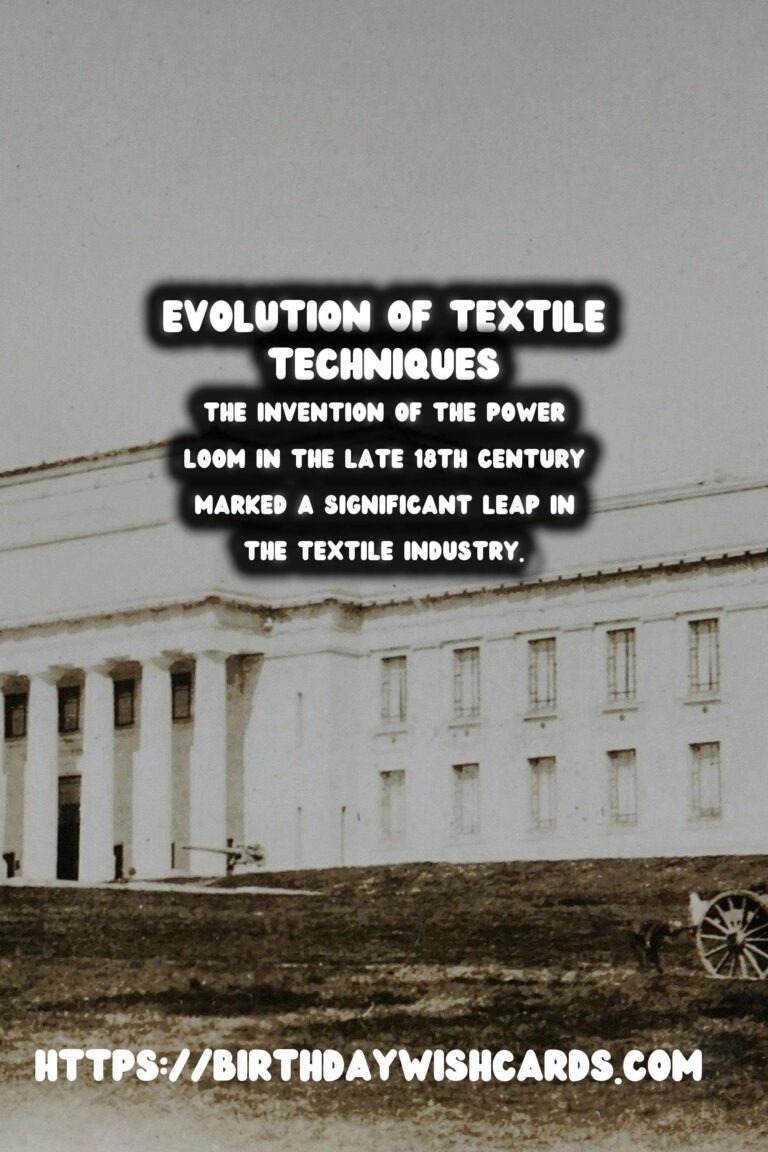
The history of textiles is a fascinating journey that showcases humanity’s innovation and creativity over millennia. From the rudimentary looms of ancient civilizations to today’s advanced power looms, the art of textile production has continually evolved, reflecting cultural, technological, and economic changes.
Ancient Beginnings: The First Weaves
Textile production dates back thousands of years to regions like Egypt, India, and China, where early humans began crafting fabrics using basic tools. The earliest known looms were simple frames or weighted looms that held threads in place while weavers interlaced yarns manually.
These ancient techniques served as the basis for all textile advancements. The primary materials used were wool, flax, and eventually cotton. Each held significant cultural value, as evidenced by Egyptian linens and Chinese silk, which became international trade treasures.
Medieval Advancements: The Introduction of the Treadle Loom
During the Medieval period, the treadle loom was developed, which greatly improved weaving efficiency. This loom allowed the weaver to lift warp threads using foot pedals, freeing hands for faster and more intricate designs.
This innovation not only boosted textile production but also paved the way for the weaving of complex patterns and colorful tapestries that adorned castles and churches across Europe.
The Industrial Revolution: Power Looms Take Charge
The invention of the power loom in the late 18th century marked a significant leap in the textile industry. Innovated by Edmund Cartwright, the power loom mechanized the weaving process, drastically reducing the need for human labor and increasing production rates.
Textile mills sprouted across England, driving the Industrial Revolution and reshaping international trade and economics. This era of mechanization brought both prosperity and challenges, as factory conditions raised concerns about workers’ rights and safety.
Modern Innovations: Today’s Textile Technology
In contemporary society, textile production has reached new heights with the advent of computerized and automated looms. These machines produce intricate fabrics swiftly, combining traditional techniques with modern technology.
Today’s industry focuses on sustainability, employing eco-friendly materials and energy-efficient processes. Innovations in smart textiles and nanotechnology have also begun to redefine the possibilities of what fabrics can do.
The Cultural and Economic Impact of Textiles
The textile industry has long influenced cultural practices and economic structures worldwide. From the famed Silk Road facilitating cultural exchange to textiles driving colonial trade routes, the importance of fabric extends beyond fashion.
Today, textiles contribute significantly to global economies, with fashion brands and textile manufacturers leading the charge in innovation and sustainability efforts.
The Future of Textiles
Looking ahead, the future of textiles is intertwined with technological advances. Developments in robotics, 3D printing, and bio-fabrication will continue to revolutionize how textiles are produced and used. The focus will likely lean towards materials that foster environmental sustainability while embracing smart features.
The story of textiles is one of continuous evolution, shaped by millennia of human endeavor. As we weave new narratives into our fabric, the principles of creativity, innovation, and culture remain ever-present.
The history of textiles is a fascinating journey that showcases humanity’s innovation and creativity over millennia. The invention of the power loom in the late 18th century marked a significant leap in the textile industry.
#TextileHistory #ModernLooms

